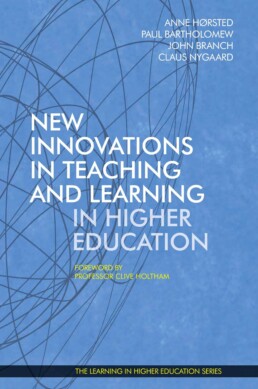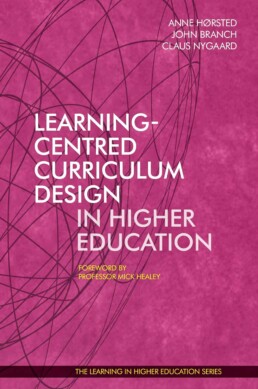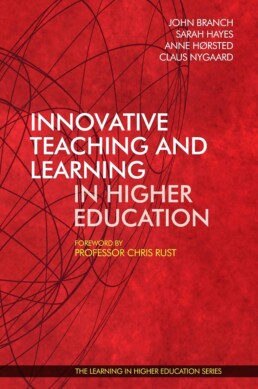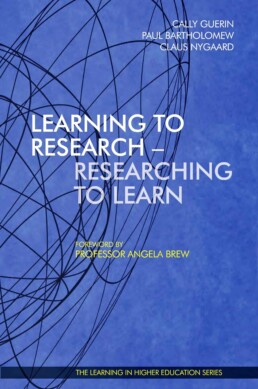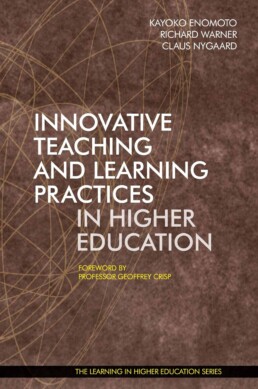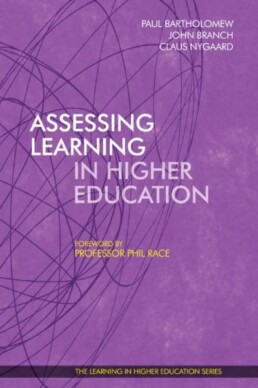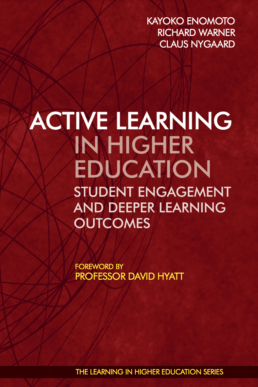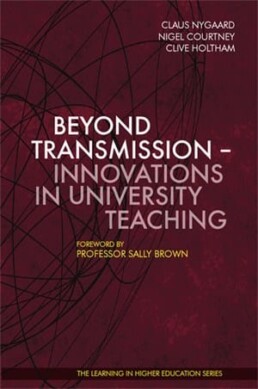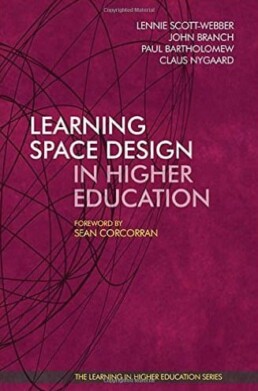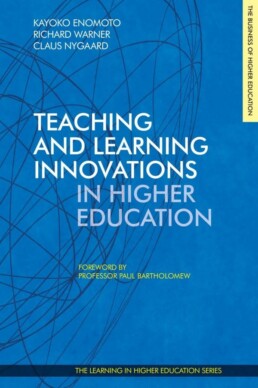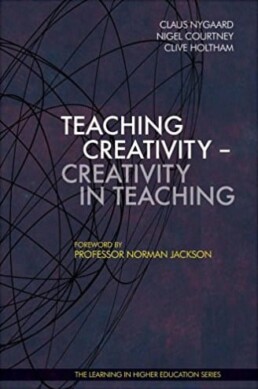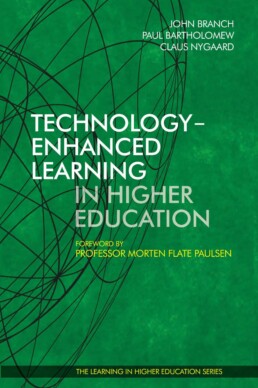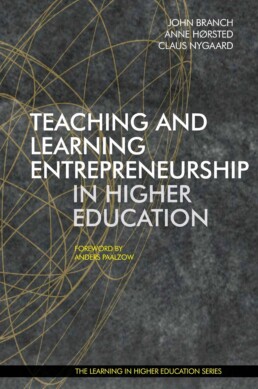Description
Case-based Learning in Higher Education
Case-based learning has become a common instructional method across higher education and is likely to be encountered in all disciplines. Its essence is a focus on real situations which require diagnosis and treatment. In Case-based Learning in Higher Education, it is explored by the Editors and contributors within the three separate but interrelated themes of concepts, theories and outcomes.
The advantages of using cases are that they tend to resonate with students because of their realism and authenticity, and their experiential nature provides specific examples of theory in context. They also require students to practise their analytical, logical, and other high-order thinking skills and provide opportunities for work in teams. The downside is that cases are not personal, so students have no stake in the ‘company’ or ‘organisation’ and cannot truly empathise with the protagonists.
But overall, the strength and value of the case method are clear, as demonstrated by these eleven detailed descriptions of its use in various contexts internationally. Each of the cases described here contains key lessons about the value of case-based learning and the benefits it delivers. There are also ideas about design approaches that can increase the effectiveness of cases. One of the key conclusions is that, since case-based learning requires students to negotiate, argue, and reflect on their knowledge, they develop more responsibility and independence, thereby improving their personal and interpersonal skills. This process can have a demonstrable impact on student self-esteem and self-confidence, increasing a student’s employability in the professional world that faces today’s and tomorrow’s graduates from higher education.
About the Editors of Case-based Learning in Higher Education
John Branch is Lecturer of Marketing and Academic Director of the part-time MBA programmes at the Stephen M. Ross School of Business, and Faculty Associate at the Center for Russian, East European & European Studies Michigan, USA.
Paul Bartholomew is Vice-chancellor at Ulster University, Belfast, Northern Ireland.
Claus Nygaard is a Professor in Management Education at Copenhagen Business School and Executive Director of the Institute for Learning in Higher Education.

Pages: 244
Published: 2014
ISBN: 9781909818323
Overview of Case-Based Learning in Higher Education
Foreword: P. A. Danaher (pp. vii-x).
Chapter 1: An Introduction to Case-based Learning. By John Branch, Paul Bartholomew and Claus Nygaard (pp. 1-16).
Chapter 2: Situating Case-based Learning Among Other Learning-Centric Pedagogies. By Eva Dobozy (pp. 17-38).
Chapter 3: The Cycle of Case-based Teaching for Transformative Learning. By Sigrídur Halldórsdóttir (pp. 39-56).
Chapter 4: Case-based Teaching in a Professional Healthcare Programme. By Paul Bartholomew (pp. 57-76).
Chapter 5: The Case for Narrative: Stories as Gateways to Academic Texts. By Monica Broido and Ilana Shiloh (pp. 77-90).
Chapter 6: Increased Student Involvement through Case-based Teaching in Foreign Language Learning. By Christine Lenstrup (pp. 91-104).
Chapter 7: Preparing for Practice: Using Case-based Learning to Support Postgraduate Law Students. By Sarah King (pp. 105-122).
Chapter 8: Using Case-based Learning to Enhance Undergraduate Students’ Employability. By Emma Flint (pp. 123-138).
Chapter 9: Using Cases in the ‘Social Software Classroom’. By Lisbet Pals Svendsen (pp. 139-160).
Chapter 10: Video-Supported Case-based Teaching. By Christian Poulsen and Steffen Löfvall (pp. 161-176).
Chapter 11: Internships as Case-based Learning for Professional Practice. By Jesper Piihl, Jens Smed Rasmussen and Jennifer Rowley (pp. 177-196).
Chapter 12: Improving Pre-Service Teachers’ Perceptions of Teaching in Rural and Remote Locations in Queensland: A Case-based Teaching Method. By Henriette van Rensburg, Betty Adcock and Karen Noble (pp. 198-212).
A detailed description of the chapters in Teaching and Learning Innovations in Higher Education
Section 1 of Case-based Learning:
In Chapter 2, Eva Dobozy explores the nature of case-based learning. She proposes a model, which classifies four approaches to ‘learning-centric education’: case-based learning, problem-based learning, inquiry-based learning, and project-based learning. She examines the theoretical and methodological aspects of each of the four pedagogical approaches. She concludes with a comparison of the four approaches, highlighting both their similarities and differences. The key lesson from the chapter is that cases – authentic stories of real-world events – hold value over and above their ‘content’ when used as the focus of learning.
In Chapter 3, Sigrídur Halldórsdóttir presents a new model of case-based learning that enables university teachers to help their students develop analytical thinking and reflective judgment skills using complex real-life scenarios. She argues that both the teacher and the learner contribute to successful case-based learning through six major steps: 1. pre-case activity, 2. immersion into a complex real-life scenario, 3. critical reflection in action, 4. critical reflection after case completion, 5. debriefing, and 6. case report. The key lesson from the chapter is that case-based learning can (and ought to) lead to the main objective of learning in higher education—transferability and adaptability of contextual knowing.
In Chapter 4, Paul Bartholomew examines an example of case-based learning in a healthcare programme. He shows how a video-based resource approach has liberated the classroom to deploy case-based teaching methods by moving information transmission to scheduled student self-study time. The chapter’s key lesson is that peer collaboration might not be necessary for learning to occur or for case-based teaching to be fully effective.
In Chapter 5, Monica Broido and Ilana Shiloh emphasise the importance of the narrative dimension in case-based learning by extending the concept of a case to the text’s structure (rather than its content). With references to their practical case-based teaching, which follows a narrative approach, they demonstrate how the case’s rhetorical elements became the trigger for both reflection and dialogue among students. The key lesson from the chapter is that students can learn from a case’s content and its narrative form.
Section 2 of Case-based Learning
In Chapter 6, Christine Lenstrup discusses case-based learning as a vehicle to increase student classroom involvement in foreign language learning. She documents the use of an open-ended approach to case-based teaching in which students are presented with one or more real-life cases from the business community that they must then solve and present. The key lesson from the chapter is that when students must negotiate, argue, and reflect on their knowledge, they develop more responsibility and independence, thereby improving their personal and interpersonal skills and foreign language learning outcomes.
In Chapter 7, Sarah King assesses the integration of case-based learning in a post-graduate law course, which is intended to prepare law students for future practice. She discusses how augmented video technology has brought realism to the cases and gives examples of pedagogical activities in various settings such as large group sessions, independent study, and small group workshops. The chapter’s key lesson is that cases that use augmented video can help provide students with valuable ‘real-life’ experiences, enhance the learning process, and facilitate unexpected but welcome learning outcomes.
In Chapter 8, Emma Flint offers an example of case-based learning in which a case was designed to take students out of their comfort zone by placing them in challenging simulated role-play situations. She describes how professional actors add realism, authenticity, and unexpected twists to the case scenarios, thereby requiring students to use their own initiative and judgement to navigate successfully. The chapter’s key lesson is that case-based learning can have a demonstrable impact on student self-esteem and self-confidence, increasing a student’s employability in the profession.
In Chapter 9, Lisbet Pals Svendsen shows how social software can support student autonomy and reflective skills in case-based learning. She also highlights the benefits and caveats of social software from an educator’s perspective. The chapter’s key lesson is that social software can enhance student-learning outcomes if there is a match between social software and student tasks.
Section 3 of Case-based Learning
In Chapter 10, Christian Poulsen and Steffen Löfvall report a research project investigating video-recording in case-based learning. Their empirical results suggest that video-recorded counselling sessions between students and the teacher can help improve the presentations in the classroom. Those students who participate in the preparation of video cases perform better than those who only watch others’ videos. The chapter’s key lesson is that videos can bolster student engagement and enthusiasm in their own time.
In Chapter 11, Jesper Piihl, Jens Smed Rasmussen and Jennifer Rowley reveal that internships can enhance student learning outcomes in terms of reflection on, interaction with, and knowledge about the gaps between theory and practice. They compare internships to more traditional case-based learning, highlighting that internships allow student learning from both the internship site and the university. The key lesson from the chapter is that students who participate in internships learn to cope with complex problems effectively, enhancing their ability to construct knowledge in different contexts.
In Chapter 12, Henriette van Rensburg, Betty Adcock, and Karen Noble describe how they used case-based learning to improve preservice teachers’ perceptions of teaching in rural and remote locations in Australia. They outline a curriculum in which students first research authentic topics through collaborative cases and then engage in critical reflection on specific teaching issues in rural and remote locations that emerge. The chapter’s key lesson is that teachers can use cases to support pre-service teachers to identify specific teaching challenges and scaffold their learning about solutions to these challenges.


